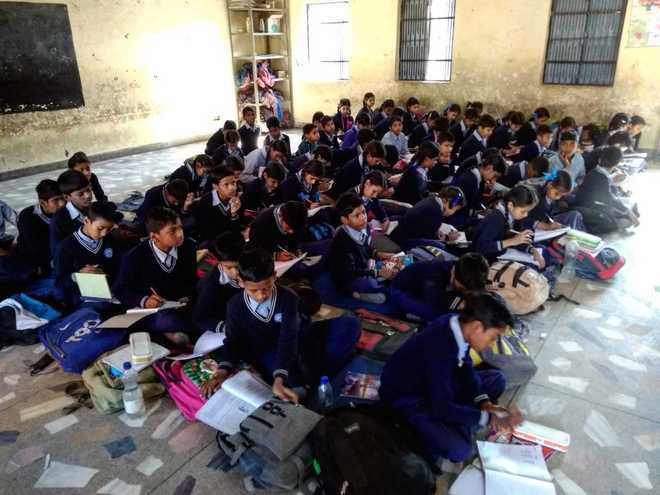CBSE-affiliated schools can have only 40 students per section
Naina Mishra
Tribune News Service
Chandigarh, October 18
The Central Board of Secondary Education (CBSE), in its new affiliation by-laws, has restricted number of students to 40 in each section and devised optimum number of sections as per the land and infrastructure of the school.
The Clause 4.8 of the affiliation by-laws read, “The optimum number of students shall be 40 in each section. There should be an availability of one square metre built-up floor area per child in classrooms in an absolute necessity of the school.” The board has also specified optimum number of sections in school as per its landholding.
Till now, the Right to Education Act (2009) had laid pupil-teacher ratio (PTR) as 30:1 for classes up to VIII. The board has now made it compulsory for schools to not exceed PTR beyond 30:1. In addition to it, there must be more than one teacher per section, excluding principal, physical education teacher and counsellor, to teach various subjects.
Several city schools have been flouting the RTE norms by accommodating more than the stipulated number of students in each section. According to the official records of the MHRD, Chandigarh has 23% primary schools with poor PTR and 40.70% primary schools with adverse student-classroom ratio.
Several government schools are still grappling with shortage of space due to the rising number of students each year. The increase in student enrolment can also be attributed to the RTE Act that maintains a ‘free and compulsory education’ to all children between the age group of six and 14 years. Under the Act, no child can be denied admission in a school.
It is due to the rising enrollment, many government schools in the peripheral and rural belt are running in double shifts. Students can be seen jostling for space in jam-packed classrooms
that accommodate more than the stipulated number of students.
“The by-laws will improve the standard of education in schools and teachers will be able to give personal attention to students. In Chandigarh, periphery schools have a large number of students as compared to available infrastructure and landholding. The Education Department should appoint more teachers to meet the requirement and restrict the strength of schools as per infrastructure,” Savinder Singh, Chairman of the Joint Action Committee, said.









